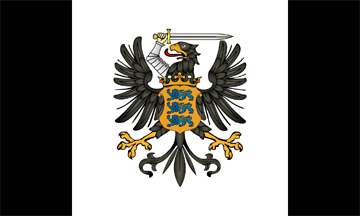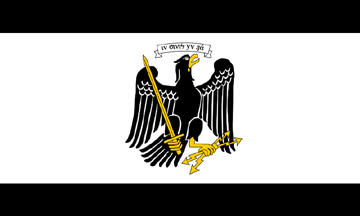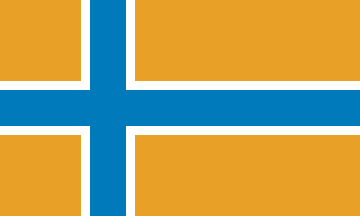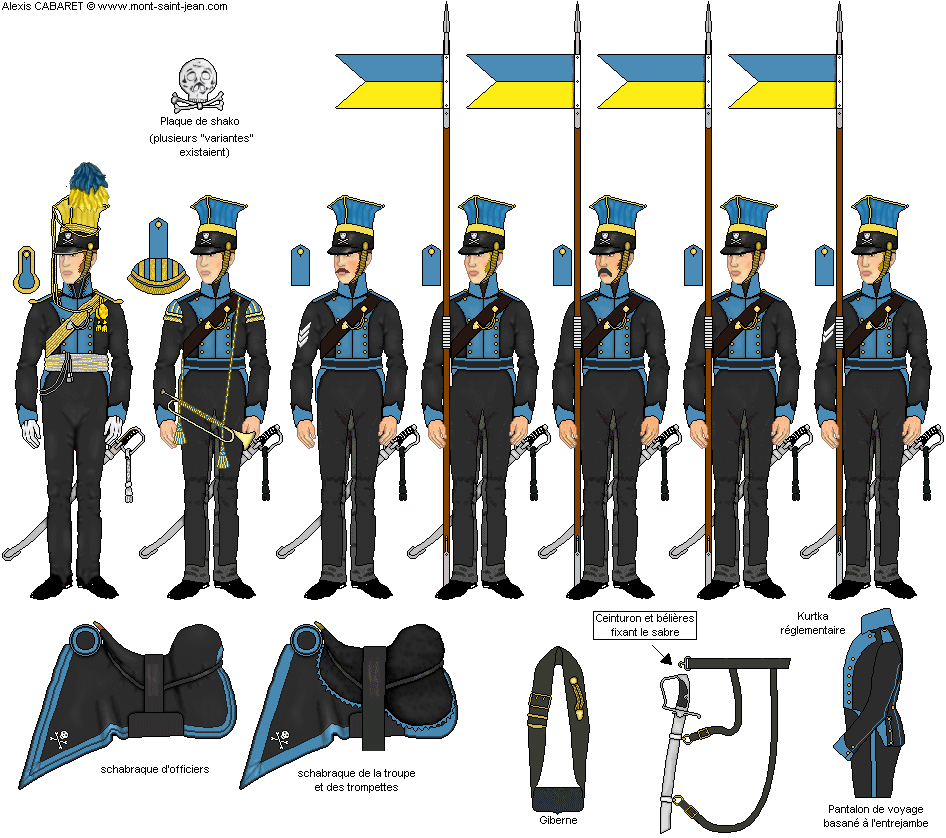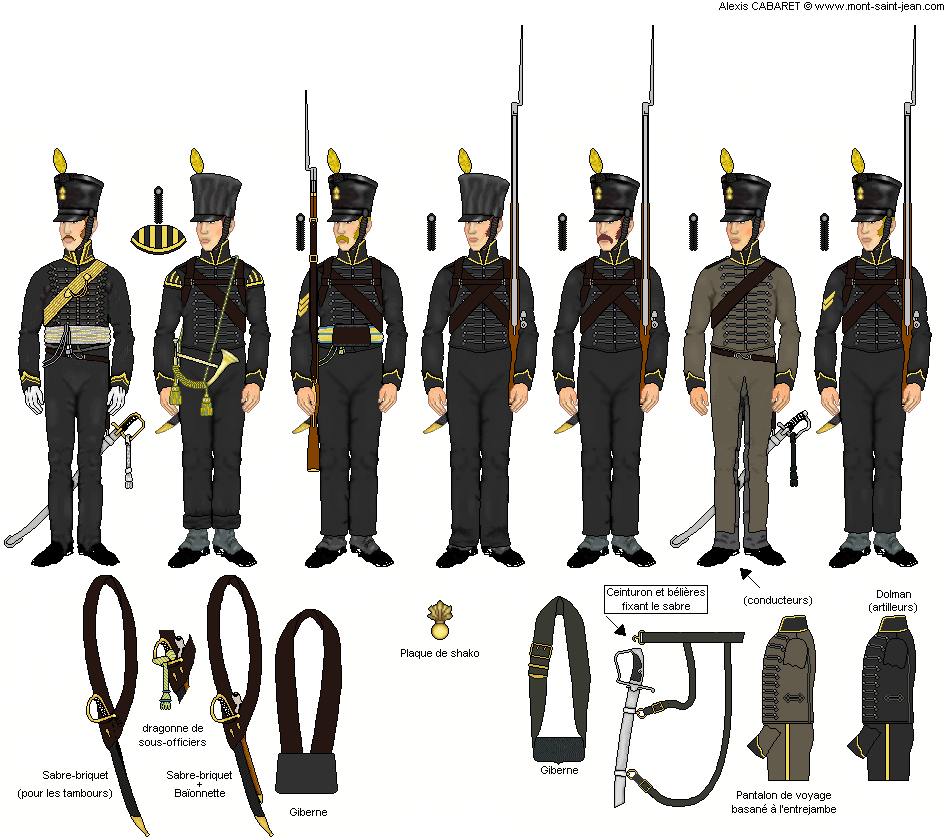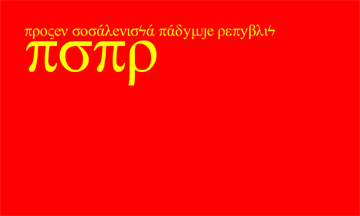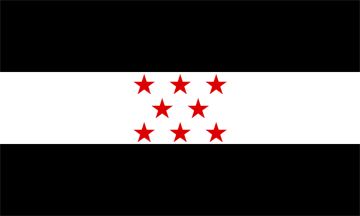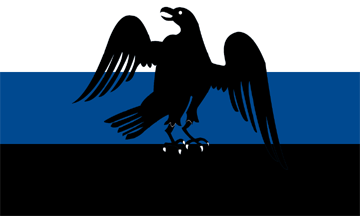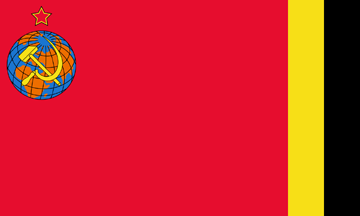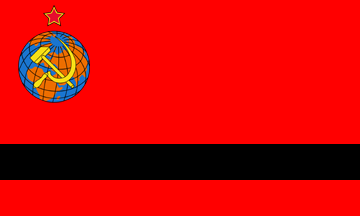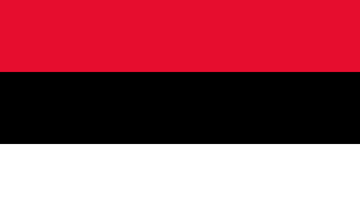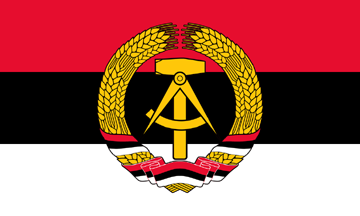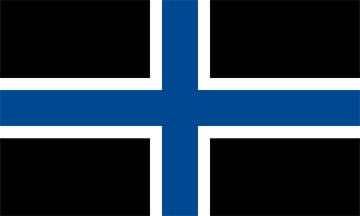Keanon's Birthday Flag and Uniform Bash
Prussian Uniforms and Colors of the Modern Eras
1826-2012
End of the Monarchy
The colors of the monarchy always varied on the personal tastes and whims of the monarch, but black and white were always constants. Gold and blue were also common given that they were the colors of the royal family. Often times black/white flags represented state or national ships and units, while gold/blue represented royal ships and units. During the middle of the XIX Century, however, the unauthorized use of the color blue was banned in Prussia after it became associated with liberal political organizations and anti-monarchism. Blue fell into disuse with military and government flags and public fashion. However, a new color swept through the ranks of the intelligentsia: red. By the XX Century Politically: Blue was associated with Fascism, Red with Socialism and Communism, and Black with Monarchism.
During the age of tight troop formations and the infamous inaccuracy of muskets and rifles, nations often had a color associated with them that was worn by soldiers, flown on flags and generally used to denote which army was which. Famous examples outside of Prussia include Byzantine Purple, English Green, Holsteinian Red, Bavarian Blue, and French White. Some of these had a practical purpose, French White came from the tropics, where soldiers wore white to keep cool. This eventually replaced the navy-blue uniforms of the rest of the Empire.
The most impractical of them, though, was Prussia's all black uniforms, which often only had color for regiment flashes. Black was the royal color, and black was worn by knights of old but outside of the cool Baltic coast, black was a liability. It was not uncommon that after a battle outside of the cool European temperate zone, for the sun and heat to do more damage to the Prussian army than the enemy. This was especially true during the colonial revolutions of the late XVIII Century. In the hot sun of Mesoamerica, many Prussian troops simply fell over and died from heat exhaustion. Meanwhile, colonial militias often wore plain linens and colonial soldiers wore yellows or tans. In Cuba, where colonial troops were vastly outnumbered, they decreed that the sun was their greatest ally and were so thankful for the Prussian's black uniforms that a sun over black was added to their flag.
Prussian flag between 1826 and 1912
Prussian battle flag from World War One
Prussian merchant jack from between 1910 and 1912
Prussian Royal Guard - 1826
Prussian Infantry - 1826
Prussian Infantry - 1910
The Civil War
The Prussian Civil War started after the failures of World War One. Pent up anger and hatred for the monarchy and the nobility which continued to zap wealth from the state even after its utter defeat, boiled over into a complex and still debated killing fest. It only lasted five years, but in those five years leaders came and went, factions rose and fell, and ideologies clashed for control over the broken state. Once again, colors became an important telling-point for soldiers. Flag were the most important, in an age were most soldiers looked the same in their grey-green trench coats. Red and rose were the most easily recognizable. They were the colors of Socialism and Communism, though yellow also played an important role. They were the only side to avoid the use of black and white, which made them stand out.
Meanwhile, liberal and republican groups used flags comprised of black, white and blue. The monarchists stuck with just black and white. However, as the war went on, there was less and less distinguishing the Republicans with the Monarchists: especially with the rise of the Prussian Party for National Unionism, usually shortened to Natun (said: "Nat-Youn"). The Natun platform of racial purity, mixed with pseudo Judeo-Christian occultism, and Jingoist policies for recovering territories lost in WWI gave them complete control over many of the other political movements. Soon after establishing themselves in 1915, black/white/blue became the colors of Reactionary and Fascist parties. This would last until the modern day.
First flag of the Prussian Communist Party (sometimes called the Pi-Rho)
Battle flag of the Prussian Communist Party (the eight red stars represent the eight cities that started the revolution)
Flag of the [briefly] restored monarchy, yellow is for Silesia who helped restore the monarchy
First republican flag of Prussia
Second republican flag of Prussia (made so it would look like the flag of France)
Flag of the Natun Party, still banned in Prussia
Communist Infantry - 1915
Under the Communist Party of Prussia, fascist and other anti-communist flags were banned; though they never went as far as to ban a color. These bans were imposed on the Eastern European states that fell under Prussian control in 1946 in the days following WWII. One of the strange exceptions was Hungary, whose flag was already red with a white stripe. The rapidly changing flags of the Civil War and the Inter-War period mostly dissolved as states chose a flag and kept it close to their hearts. As a national symbol, communist flags often fell short. They were imposed on the people, had complicated symbols or random colors that were supposed to divide the new communist government from the old monarchist ones.
So during this period so-called "pan" flags became increasingly popular and increasingly frowned upon (and banned). Pan flags often involved a specific geographic or linguist group adopting a set of colors. The pan-German colors were white/red/blue while the pan-Balkan colors were gold/red/blue. In Africa the black/green/red and yellow/green/red flags gained a large amount of support. By the 1990s the Pan-Prussian colors were rose/black/white, though only Prussia and Zilina adopted the colors. Other Prussian states such as Silesia and Carpathia already had well known national symbols (Carpathia went as far as to adopt the pan-colors of another group). In the Americas, support for anything pro-Prussian was only starting to return. Even so, in the Americas there was already a large attachment to the national flags that flew during their struggles for independence and that would not soon be forgotten.
The flag of Prussia under the Communist Convention of 1919
The flag of Prussia under the Communist Convention of 1947
The Prussian naval jack between 1919 and 1994 (when it was replaced with the State Flag)
During the Rose Revolution that essentially shut Prussia down for two years, the rose/black/white flag gained increasing popularity and support. Some people felt uncomfortable with the Communist rose remaining on the flag, but many more felt more uncomfortable when the suggested replacement was blue. During the Communist era, blue was equated with Fascism and Restorationism. This of course was not helped by Conservative, Christian, Fascist and Restorationist parties adopting blue/black/white as their colors soon after the return of constitutional voting.
The National Flag (or
landfánu) of Prussia
The State Flag (or
jáfánu) of Prussia
The Christ Flag (or
kristfánu) of the Christian Democratic Party of Prussia
The Restorationist Flag (or
sinikæsfánu) of the Prussian/Silesian Coalition for Monarchism

